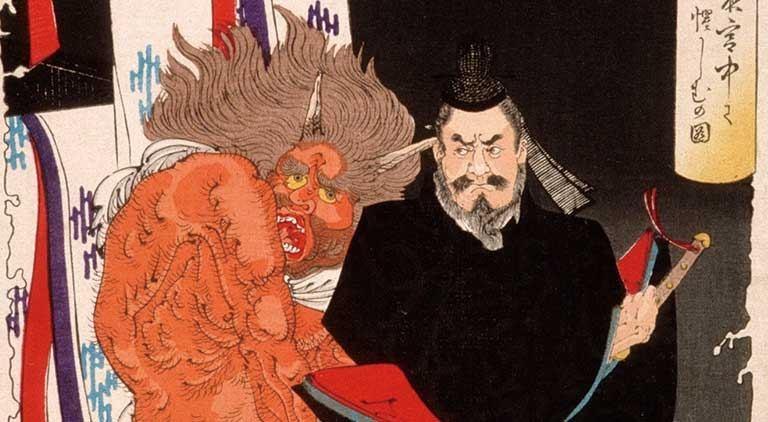Oni have long captured the imagination of both Japanese folklore enthusiasts and demon lovers around the world. While most people are familiar with the classic red and blue oni, there are actually five distinct oni types in traditional lore—red, blue, yellow, green, and black. Each color is not only visually striking but also carries deep symbolic meaning rooted in the ancient Chinese five elements and Buddhist teachings on the “Five Hindrances.” This article delves into each oni type, revealing how these colorful demons represent human vices and how they are celebrated in customs like the bean-throwing ritual during Setsubun.
The Colors and Meanings of Oni
Traditional lore assigns each oni color a specific vice, drawing from the principles of the five elements (fire, wood, earth, metal, water) and the Buddhist concept of the “Five Hindrances.” During Setsubun, tossing beans at these oni is believed to help rid oneself of these negative emotions and behaviors.
Red Oni
- Represents: Greed/Desire
- Buddhist Connection: Tonyoku-gai (欲愛蓋 or 貪欲蓋) – an excessive craving or desire.
- Five Elements: Fire
Red oni symbolize uncontrolled desire and greed. By figuratively “hitting” the red oni with beans, practitioners aim to overcome the insatiable longing that can disturb inner peace.
Blue Oni
- Represents: Anger and Hatred
- Buddhist Connection: Shinnigai (瞋恚蓋) – the heart’s tendency to harbor anger and resentment.
- Five Elements: Wood
Blue oni embody the destructive power of anger and hatred. The act of throwing beans at blue oni is meant to dispel these negative feelings, helping individuals restore calm and balance to their lives.
Yellow Oni
- Represents: Restlessness and Agitation
- Buddhist Connection: Jouko-gai (掉挙蓋) – a state of mental agitation and loss of calm.
- Five Elements: Earth
Yellow oni are associated with a scattered, agitated mind. By targeting the yellow oni during Setsubun, one seeks to quell emotional turbulence and regain mental tranquility.
Green Oni
- Represents: Sloth and Lethargy
- Buddhist Connection: Konjin-gai (惛沈蓋) or Suimin-gai (睡眠蓋) – indicating a dull, inactive state of mind.
- Five Elements: Metal
Green oni are symbolic of laziness and inactivity. The ritual of hurling beans at green oni is a call to overcome procrastination and boost one’s inner energy and motivation.
Black Oni
- Represents: Doubt and Suspicion
- Buddhist Connection: Giga (疑蓋) – the tendency to harbor skepticism and mistrust.
- Five Elements: Water
Black oni stand for the darkness of doubt and suspicion that can cloud judgment. By confronting the black oni, individuals are encouraged to clear away uncertainties and cultivate a more confident, open mindset.
Conclusion
The rich symbolism behind each oni type reveals a unique aspect of human emotion and vice. From the passionate flames of the red oni to the murky depths of the black oni, these demons offer a visual guide to the challenges we face in our inner lives. As you celebrate Setsubun or simply explore the lore, remember that each bean thrown is more than just a playful act—it’s a ritual of self-purification aimed at banishing negativity. Embrace these ancient traditions to better understand and conquer your own inner demons.


Comments